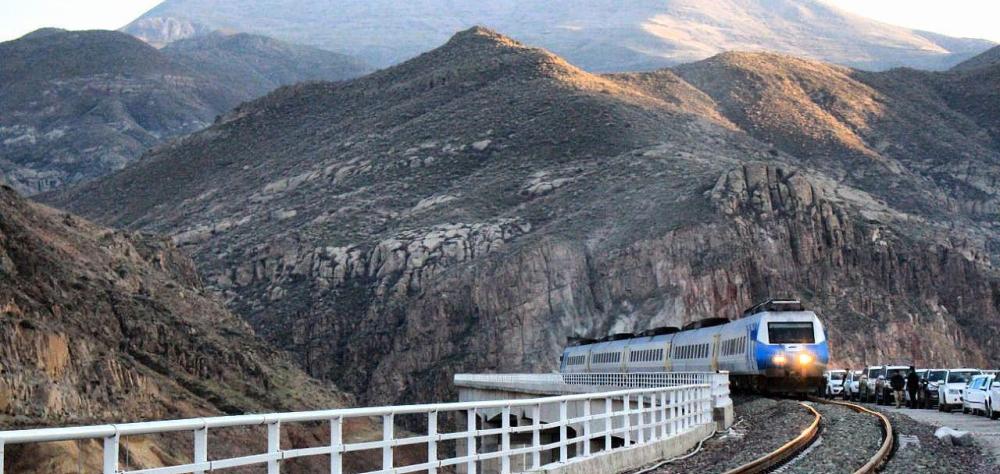Alwaght- Focusing on Africa and Asia for new markets due to Ukraine war and Western sanctions, Russia for the first time experimentally sent a freight train to the Persian Gulf through southern rail corridor via Iran.
The North-South Corridor that was launched last year is slated to play an important role in the Russian and Central Asian trade with other parts of the world, and entry of the first foreign train from Russia into the Persian Gulf will mark a new chapter the North-South Corridor will play in regional trade.
Miad Salehi, the head of Islamic Republic of Iran Railways (RAI) on Sunday said that with railway transportation diplomacy of the administration of Sayyed Ibrahim Raeisi, a transit train carrying 36 containers for the first time entered Iran from Incheh Borun border from Russia and is bound for Saudi Arabia.
“After customs arrangements, this shipment moved to Bandar Abbas in its way to Jeddah port,” he continued.
Having in mind that Saudi Arabia from the Persian Gulf has no ports for ships to dock, this shipment has to be transferred to the port of Jeddah in West of the kingdom. It is noteworthy that Russian ambassador to Riyadh in February announced that the two countries are set to increase their trade to $5 billion, and it seems that a major part of their trade will go through Iran.
Shahriar Shahriari, head of customs of Golestan province, announced movement of the first Russian container train to Saudi Arabia, adding: “The new route provides the possibility of reducing the delivery time by a few days, and this route also allows container trains to be sent from Southern Ural railway stations to Bandar Abbas through Incheh Borun and Sarakhs. Another important point is that with the reduction of the customs tariff, the cost of sending goods through the North-South corridor was reduced by almost half.
North-South Corridor, Russia’s vital artery
North-South Corridor was launched in May last year after a two-decade halt, and the first shipment was transferred from Russia to the Indian Ocean.
About 160 kilometers of this rail route from Astara to Rasht in Iran has not yet been completed, and according to bilateral agreements, Russia is committed to complete this project in the next four years.
Economists say Iran targets $11 billion in incomes from the project once it is completed. The route is expected to annually transfer $250 billion worth of Indian, Chinese, and East Asian goods to Europe, and Iran’s share in the transit is predicted about 4 percent and the production about 15 percent.
The transfer of Russian goods to Saudi Arabia from Iran’s railways is seen a turning point in regional trade and can be a prelude to the development of rail infrastructure of regional countries.
Russia used to export some of its goods through the Black Sea to the Mediterranean and from there through the Suez Canal to the Red Sea and then to the Indian Ocean, which is a long route and it takes months for Russian merchant ships to reach India, but this 3000-kilometer route can be a good alternative for Russia to do business with India and the Persian Gulf countries in the shortest possible time and at a lower cost.
In recent years, Iran has tried to become the commercial hub of the region by developing railway infrastructure and encouraging other countries in the region to use the North-South corridor. If the Astara-Rasht railway is completed in the coming years, the transit of goods will reach a significant level and the countries of East Asia, Central Asia and Russia will be able to use this route to transfer their goods to the Indian Ocean, the Persian Gulf and even Europe.
Iran, the railway trade hub
In today’s world, railways are regarded as the vital infrastructure in the international trade network due to tangible cutting of the transit costs, bigger transportation capabilities, and higher security compared to other transit routes.
With the major economic powers focusing more on the railway sector and investing in this sector to develop their international trade network, efforts by other countries to upgrade railway capacities have been prioritized for a bigger share in the global trade.
Currently there is no rail route for transfer of Russian goods to the Persian Gulf, and specifically to Saudi Arabia, and they have to be transferred to the Arab country by ships from Bandar Abbas. But in recent months, proposals have been exchanged between Iran and some Arab countries for railway infrastructure development through Iraq. If the two sides reach a final deal, in the next years, transit routes will flourish.
In June, a meeting between Saudi and Iraqi representatives was held to discuss development of rail infrastructure. According to sources with knowledge of the matter, one of the most important plans discussed and projected under Saudi Vision 2030 is construction of joint Saudi-Iraqi railway from the Red Sea coasts to Iraq.
Iran and Iraq agreed a decade ago to complete the “Khorramshahr-Shalemcheh-Basra” rail route and develop the trade between the two nations. A large part of this railway has been built, and if the Iraqi government shows determination, it will be completed in the shortest possible time and effectively improve regional trade.
If this railway is connected to Saudi Arabia and other Arab countries, it will save the Russians, Indians and Chinese money and time. At the same time, (Persian) Gulf Cooperation Council states are trying to use Iranian capacity for trade with Central Asia.
It is noteworthy that Iran and Saudi Arabia have recently joined BRICS and their trade with Russia and China will see an upgrade in the future.
In recent years, Iran has made a lot of efforts to be a transit link between East and West by expanding its railway network, and in the meantime, completing the railways with Afghanistan, Central Asia and Iraq and then beyond the Mediterranean are part of the activities of the President Raeisi's administration for the greater use of the capacity of the railways, and regional countries are also aware of the importance of this issue.
Reports by the Iranian government suggest that transit sector saw transportation of 9.3 million tons of goods via roads last year. In the first quarter of the Persian year (from March to July), this was 3.6 million tons, showing a 3-percent growth of the road transit.
In association with India and Armenia, Iran even put on agenda construction of a new railway in recent months that will connect the Indian Ocean to the Black Sea and then to Europe. According to estimates, annually, tens of billions of dollars worth of goods will be transported via this route.
In the past decade, Indians have invested in Iranian Port of Chabahar as the first station of their rail and sea corridor, but recently they have looked at other routes to diversify their transportation routes. Projects such as the Indian Ocean to the Persian Gulf to Israel and finally Europe, or the maritime corridor to Greece are among the plans put on the agenda of New Delhi.
Despite all these options, Chabahar and Iranian rail corridors remain the best option for India to transfer its products to Europe, Persian Gulf, Central Asia, and Russia. The Indians know well that their rivals the Chinese will use Iranian railways under their Road and Belt Initiative, and further procrastination of India will allow China to take control of the regional trade.
In general, it can be suggested that Iran’s strategy for developing its railway infrastructure and expanding trade with other countries will upgrade its trade rank globally and this means that the American policies to isolate Tehran have met their failure, and world powers specially count on Iranian transit routes to advance their major trade plans.



























